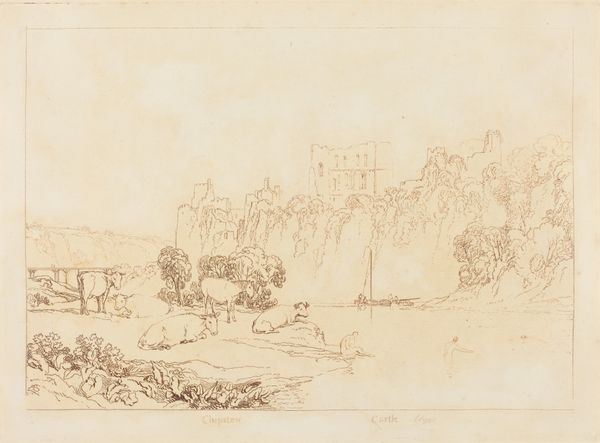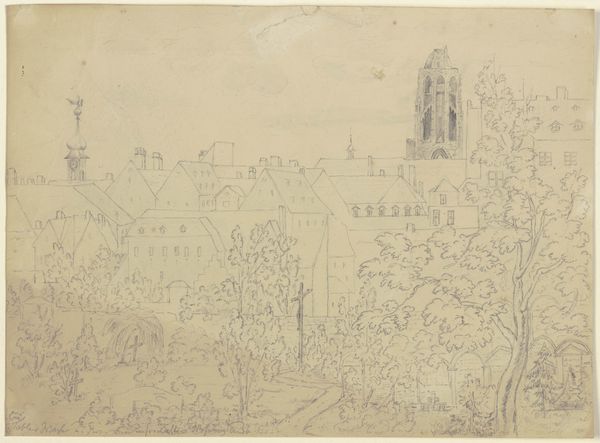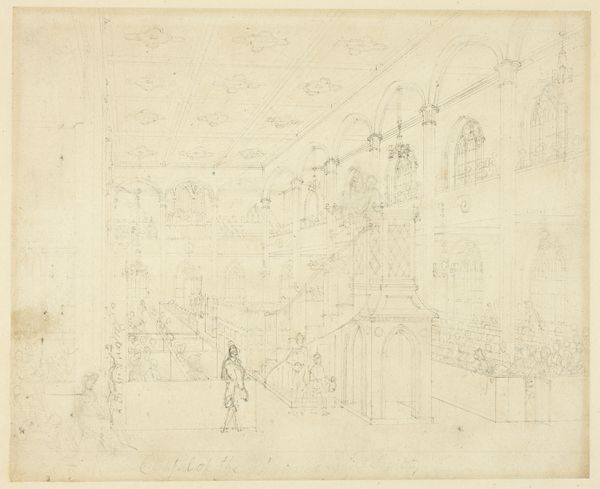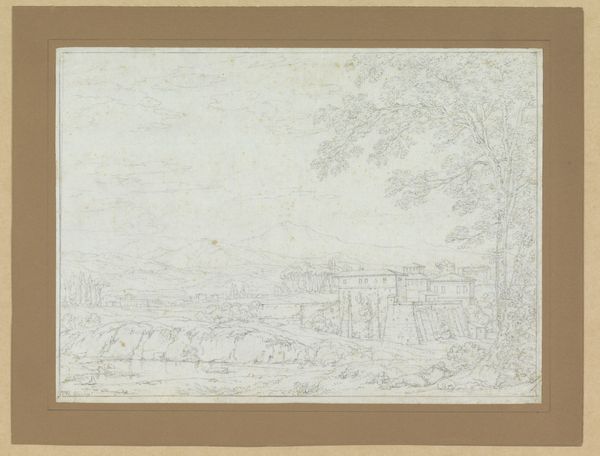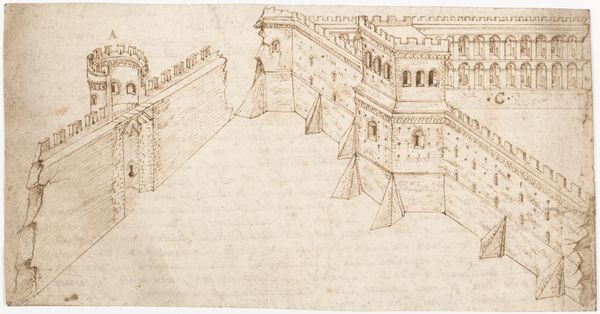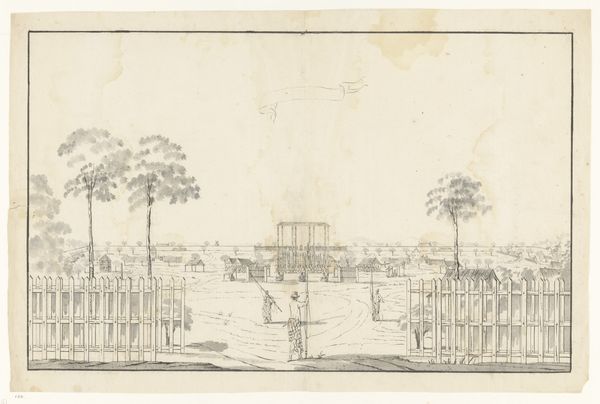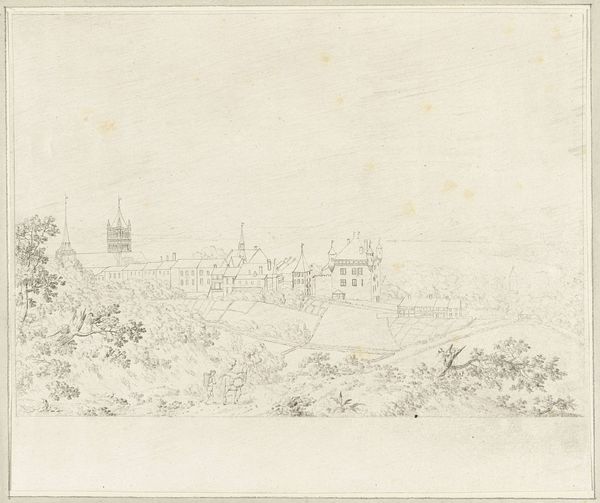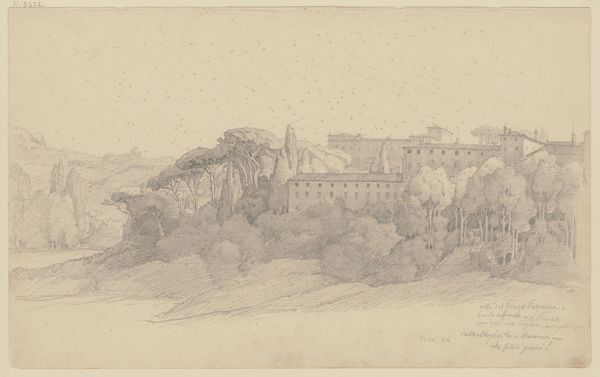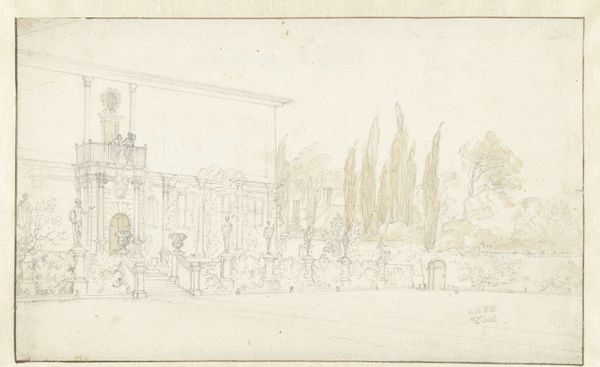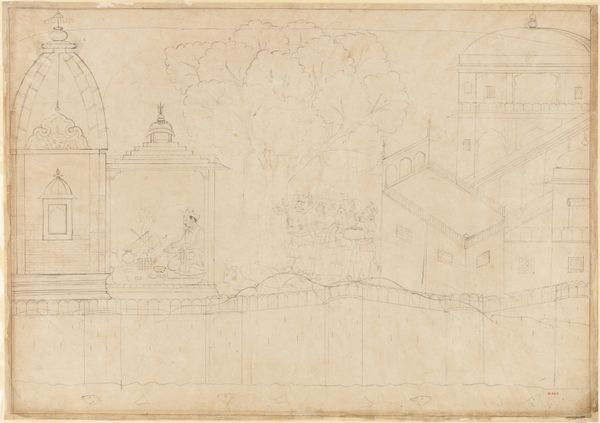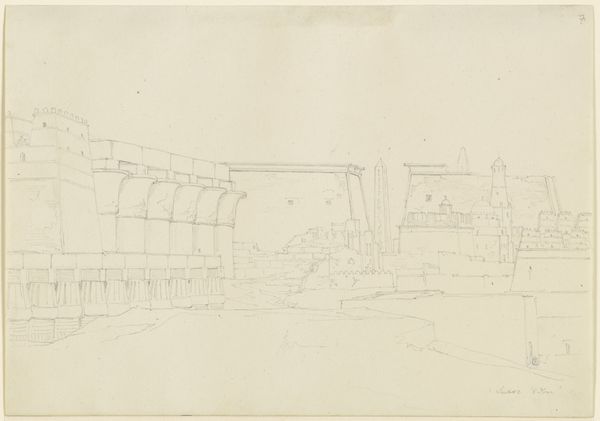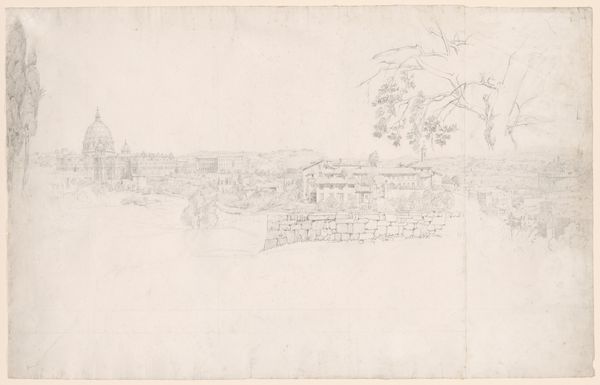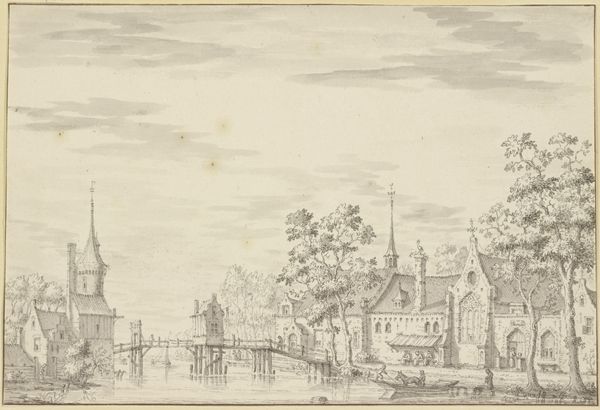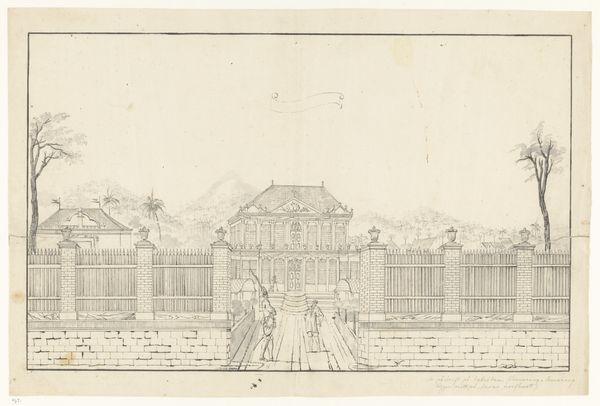
drawing, print, architecture
#
drawing
#
neoclassicism
# print
#
landscape
#
ancient-mediterranean
#
romanticism
#
architecture
Dimensions: sheet: 14 15/16 x 22 15/16 in. (38 x 58.2 cm)
Copyright: Public Domain
Curator: Welcome. We're standing before Franz Kaisermann’s "Inner view of the Colosseum." This work, dating roughly from 1785 to 1833, presents the iconic amphitheater rendered through drawing and printmaking. Editor: My initial impression is… wistful. The Colosseum, almost sketched, bathed in pale hues. There’s a definite feeling of melancholy, a forgotten grandeur. Like a memory fading. Curator: Precisely. Kaisermann captures a very specific moment, a shift in the perception of ancient structures. We see the transition from Neoclassicism, concerned with accurate historical portrayal, into Romanticism’s emphasis on emotional and subjective response to the ruin. Consider the work in the context of evolving print technologies. The lines suggest mass reproducibility and an emerging market for affordable art for a rising middle class keen to possess 'views' of their travels and heritage. Editor: The 'heritage' aspect resonates. It’s not just stone and mortar; it's an emotional landscape. Look at how the sketchy lines create a sense of transience; the feeling that this grand monument is slowly surrendering to time and the elements. I sense the echoes of the gladiators and spectators in a place where they aren't really present. A haunted space, almost. Curator: A place shaped by specific labors and socio-political function. A Roman arena originally built by forced Jewish labor after the Roman-Jewish war and then in subsequent eras providing different function; to places where gladiators, slaves, and exotic animals meet death in public spectacle; a very concrete monument of Imperial violence. How does this change or amplify your subjective view? Editor: It adds weight to the melancholic feel! It underlines the cyclical nature of power, violence, and eventual decay. Even in its ruinous state, the Colosseum is a testament to both the ingenuity and brutality of humankind. But that it is shown rendered so palely… feels a bit elegiac too? Curator: In its current state housed at the Met in New York, this work offers us more than just historical architectural imagery or sentimentality; it also points to the global flows and consumption of culture as artifact. Editor: I think you've definitely provided interesting materialist perspectives to contextualize the romanticism I originally read in this! Thanks.
Comments
No comments
Be the first to comment and join the conversation on the ultimate creative platform.
